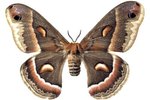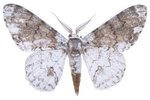
Caterpillars are basically the babies of moths and butterflies, so they don't reproduce. However, after they mature into their winged adult forms, they're free to mate and lay eggs that hatch into more caterpillars. Caterpillars are considered the larval stage of moths and butterflies and require major changes to develop to the point that they can reproduce.
First Come the Eggs
Caterpillars begin as eggs, typically laid on the underside of leaves or bark or other safe places. They’re very small and can be hard to spot, whether they’re singly or in groups. How many are laid at a time depends on what species they belong to. They’re shapes vary, too, from a tiny smooth ball to a more elongated ribbed oval. The length of time it takes the eggs to hatch depends in part on the species, but also on the weather. Some eggs can hatch in just two or three days.
The Larvae Hatch
When the eggs hatch they release tiny caterpillars, the larvae of moths and butterflies, who spend the next part of their lives eating and growing. Caterpillars shed their skins again and again, typically four or more times, since their skins can’t grow with them. Some types of caterpillars, such as the tomato hornworm, eat enough to damage both commercial crops and home gardens, and others, such as the gypsy moth caterpillar, can strip whole sections of forestland bare of leaves. Most adult butterflies and moths don’t harm plants and aren't treated as pests.
Time to Pupate
When caterpillars are developed enough for the next stage, they build chrysalises or cocoons around themselves and prepare to undergo metamorphosis as pupae. This stage brings dramatic changes for caterpillars. The chrysalises often are colored to match their surroundings, usually green or brown, while cocoons might be lighter in color. They are attached to branches and other plant parts or buried in the soil. Caterpillars typically remain in the pupae stage anywhere from two weeks to an entire winter and emerge as adult moths or butterflies.
Flying Free
After the newly transformed butterflies or moths emerge from their chrysalises or cocoons, they take some time for their wings to dry out, harden and get strong. Most can fly, though some, such as the female gypsy moth, cannot. It’s common for these adults to feed on nectar, and they typically do little or no harm to gardens and other plants at this stage. Quite the opposite, usually; they serve a powerful flower pollinators. The main task once the moths and butterflies have become adults is to seek out a mate and reproduce. The female will lay the next generation of eggs in a safe place before she dies.
References
- University of Illinois Extension: Gypsy Moth
- University of Nevada, Reno: Caterpillars.org: Life Cycle of the Butterfly or Moth
- Swallowtail Farms: The Butterfly Life Cycle
- The Children’s Butterfly Site: Life Cycle of Butterflies and Moths
- University of Florida IFAS Extension: Tobacco Hornworm and Tomato Hornworm
Photo Credits
-
Jupiterimages/Photos.com/Getty Images




